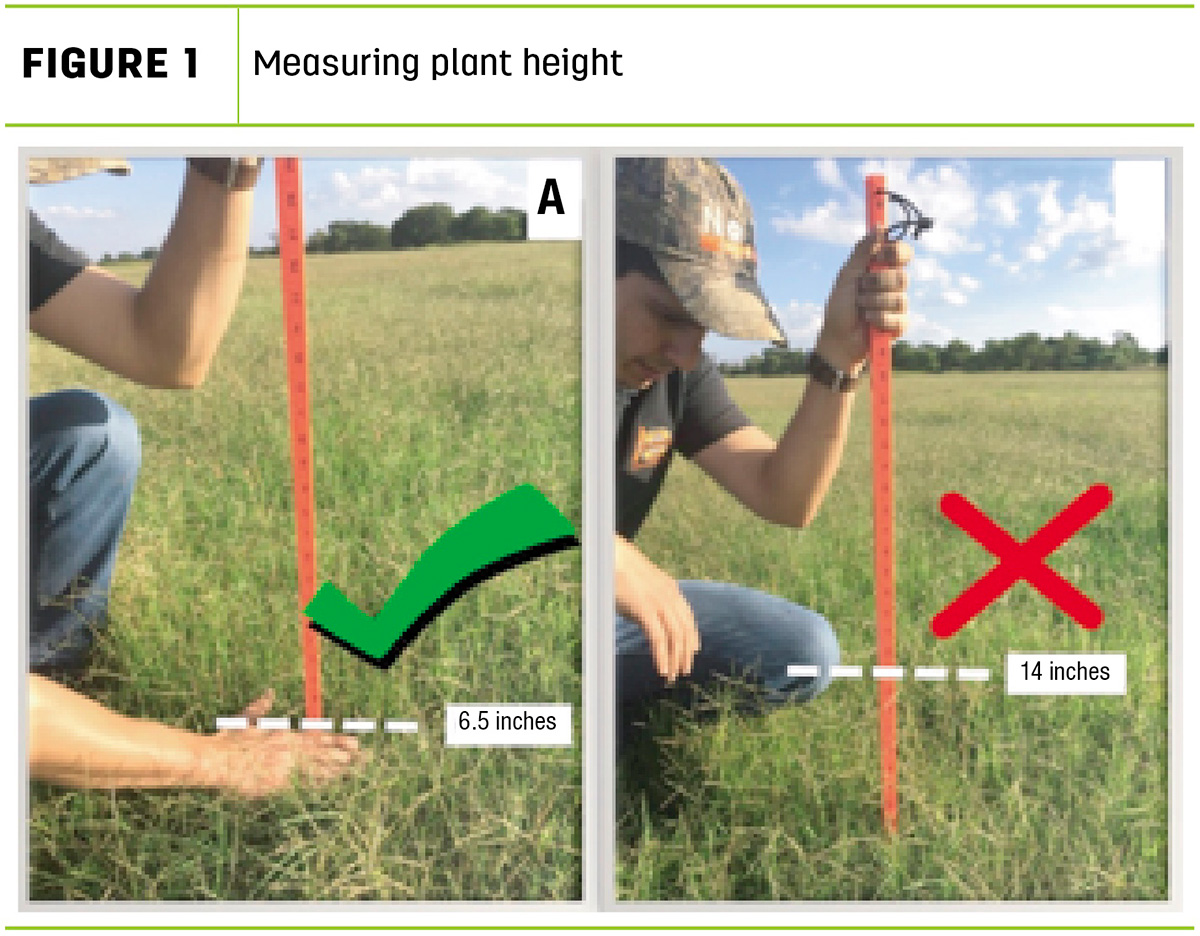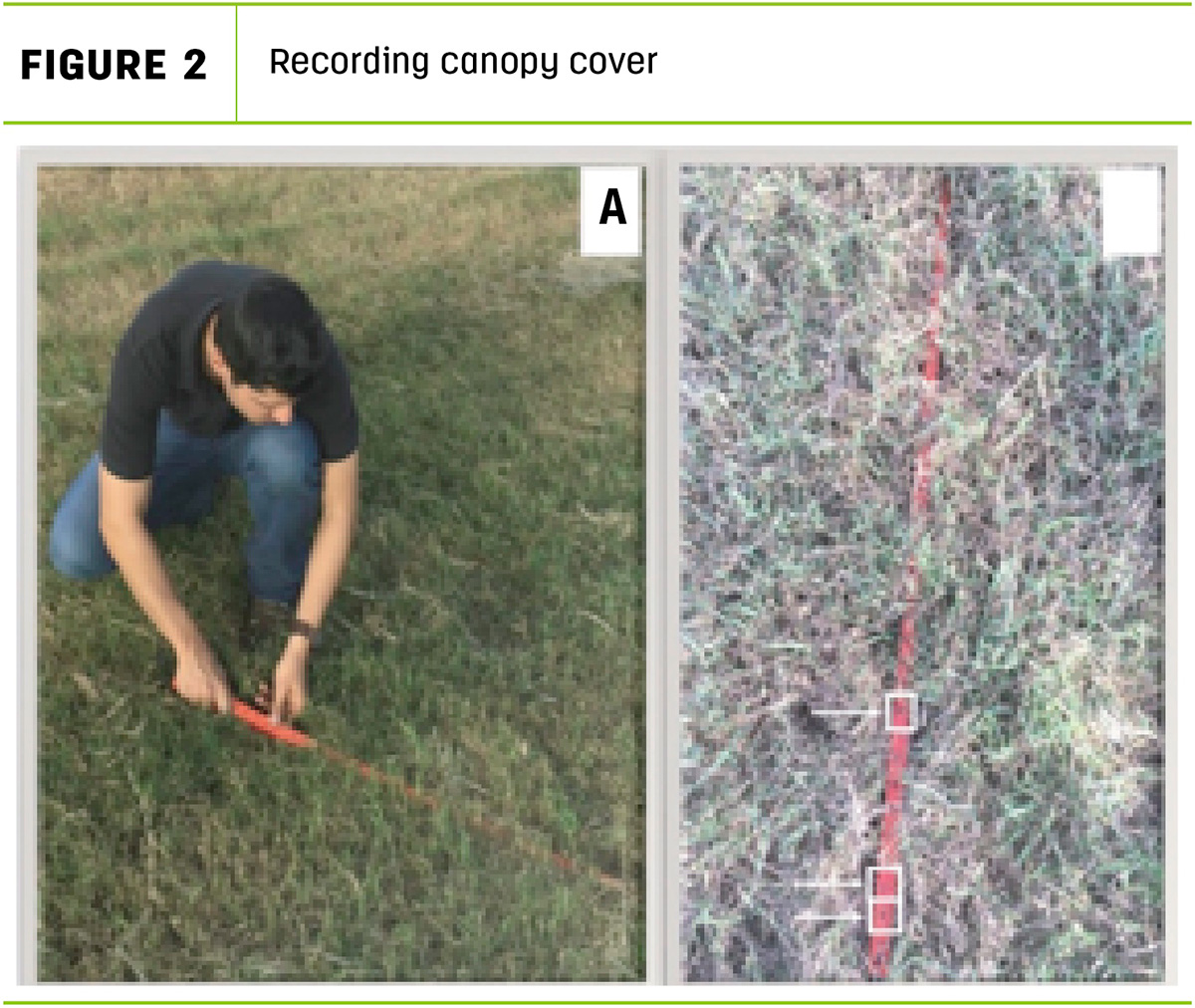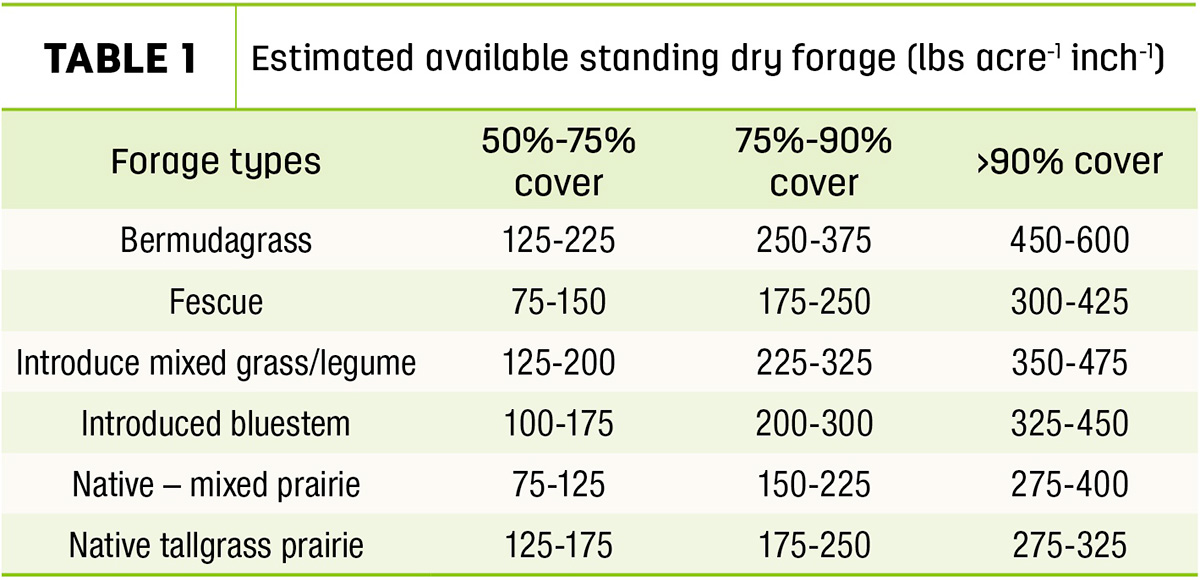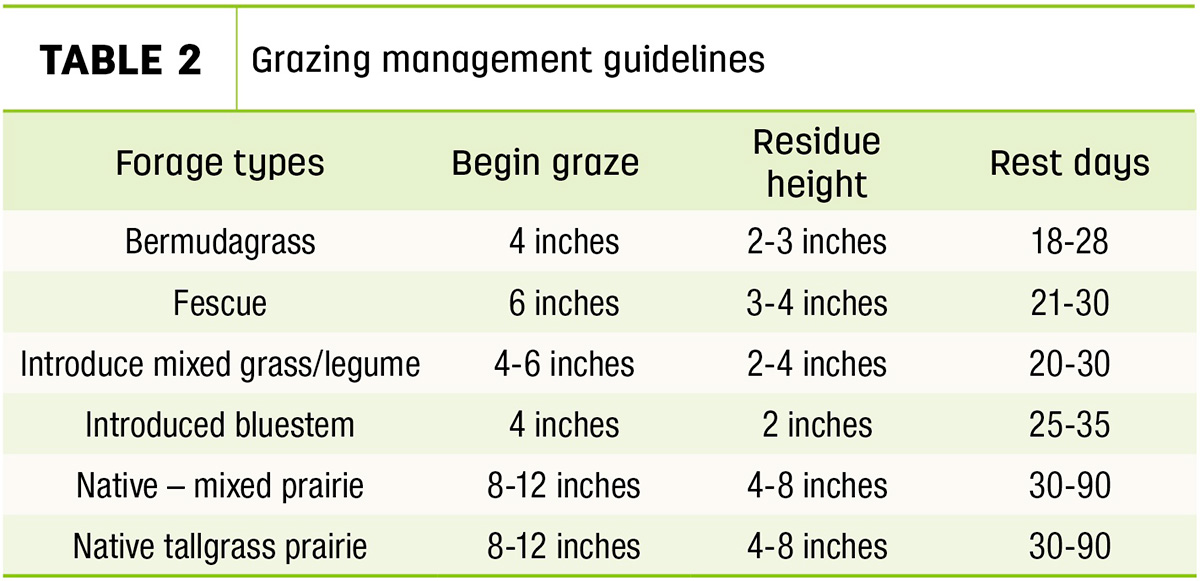The forage produced in pastures changes yearly due to rainfall and temperature fluctuations. Changes in forage production need to be adjusted to match the herd size with the amount of forage produced to avoid pasture under- or overgrazing. For that reason, matching the correct herd size and grazing time with pasture production every year is crucial for maintaining long-term pasture productivity and profitable animal production.
Forage production can be measured, estimated or guessed from experience. Forages can be accurately measured by clipping and weighing, which is a labor-intensive and time-consuming method. On the other hand, a grazing stick allows a quick estimate of forage production based on readings of forage height and canopy cover. At first glance, the grazing stick seems like a simple yardstick, but it is a complete measuring system. Grazing sticks vary from state to state to accommodate the most pertinent guidelines according to a particular region. However, most grazing sticks have the same features, such as a ruler for measuring forage height and canopy cover, conversion tables, formulas and grazing guidelines for quick pasture management decisions.
Although different grazing stick models look alike, it is recommended the producer uses the grazing stick developed for his or her state. Forage estimates presented in the tables may change across the region. Those estimates are developed based on forage clippings performed for each region; consequently, their values will differ to better accommodate each forage production potential for each region. To find a pasture stick in your state, contact your local cooperative extension grazing educator, a USDA Natural Resources Conservation Service (NRCS) office, an affiliate of the American Forage and Grassland Council (if your state has one), or the national Grazing Lands Conservation Initiative.
In a nutshell, the grazing stick enables a quick estimate of forage production based on readings of forage height and canopy cover. Plant height and canopy cover measurements should be taken before moving livestock to each pasture unit. Do not choose the areas to measure. Never select the highest- or lowest-yielding spots, because it leads to under- or overestimation. It is recommended to take 15 to 20 measurements per pasture. To measure plant height, place the grazing stick vertical to the ground, gently push your hand into the canopy and record the height where you start to feel a modest resistance from the forage leaves against your hand (Figure 1).

To record canopy cover, at the same spot of the plant height measurement, slide the stick under the canopy with the ruler facing up, count the inch marks covered by vegetation out of 33 and multiply the total number of covered inch marks by three to estimate the percent canopy cover (Figure 2).

Finally, the available forage per acre can be calculated based on these readings. First, average the 15 to 20 plant height and canopy cover readings. Second, using the average canopy cover value, find the amount of forage per inch using Table 1.

For instance, a bermudagrass pasture’s average plant height and canopy cover were 12 inches and 75%. In this case, Table 1 shows that there are 375 pounds of forage per acre-inch. Then, looking at Table 2, one can see that it is necessary to leave a residue height of 3 inches for good bermudagrass regrowth.

Thus, three inches is subtracted from the 12 inches of plant height, leaving us with 9 inches of forage. The last step is to multiply the 9 inches of forage by the 375 pounds of forage per acre-inch, resulting in about 3,375 pounds of forage per acre.
Calculating the forage per acre is crucial to determining the number of animals and grazing days for a specific pasture. For more details and complete calculation guidance, read the PSS-2594 Plan Grazing Management fact sheet using the Oklahoma grazing stick (extension.okstate.edu/fact-sheets). Another option is downloading the GrazeOK app for Android and iOS smartphones. GrazeOK will do all the calculations once grazing stick readings are entered into the smartphone. For more information about the GrazeOK app, watch this YouTube video (Manage pastures in your phone).







